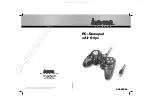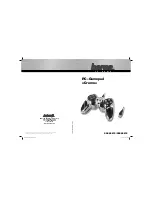
Sentry Xpress 5 Cone-Fire / Ramp-Hold
34
Do not leave your kiln unattended during operation.
Glossary
A
Amperage The amount of electricity
the kiln pulls is measured in amps. The
heating elements pull less amperage
when they begin to wear.
AOP Auxiliary outlet. This is an electri-
cal outlet, or socket, mounted on the
kiln. The electricity to the outlet can be
turned on or off by the controller. See
the AOP1 option.
B
Bisque firing Firing the greenware to
harden and prepare for glazing. Also
called greenware firing.
C
Cone Offset In Cone-Fire mode, the
witness cones inside the kiln should
bend to 6 o’clock. you can adjust the
controller
Cone-Fire The firing mode for ceram-
ics. Choose the cone number and slow,
standard, or fast speed. You don’t have
to enter the temperature.
Cone, pyrometric A small pyramid of
ceramic materials that will react to the
effect of time, temperature, and atmo-
spheric condition inside the kiln in the
same way as ceramic ware.
Controlled cooling Slowing the cool-
ing rate of a kiln. Slow cooling relieves
stresses in hot glass to prevent break-
age. Slow cooling, also called down fir-
ing, can alter ceramic glazes.
E
Element A coil of wire that heats when
electricity passes through it.
F
Firing schedule A set of instructions
that tell the controller how hot to fire,
and at what rate of temperature
change.
G
Glaze A liquid composed of glass par-
ticles applied to ceramic ware.
Glaze firing The bisque or greenware
firing hardens the ware and prepares it
for glaze. The glaze firing melts the
glaze over the clay.
Greenware Unfired clay objects.
Greenware firing Firing the greenware
to harden and prepare for glazing. Also
called bisque firing.
H
Heat soak Maintaining a particular
temperature inside a kiln.
Hold time The length of time that a
temperature is maintained inside a kiln.
See “heat soak.”
hold
M
Maturing point The stage where clay
or glaze has received the correct
amount of “heat work.” This is usually
measured by the 6 o’clock bend of a
large pyrometric cone placed on a kiln
shelf beside the ware being fired.
O
Overfire When a kiln fires hotter than
intended. Some kilns cannot overfire.
They don’t get hot enough.
Overshoot The temperature has risen
higher than the controller was pro-
grammed. The temperature over-
shoots usually for a short time only.
P
Peephole The hole in the sidewall of a
kiln used to see the interior of a hot kiln.
Pyrometric cone A small clay pyramid
that stands upright on the kiln shelf. It
measures the amount of heat work that
ceramic ware is exposed to inside a
kiln. Heat work is a combination of tem-
perature plus the length of time the
ware is exposed to heat.
R
Ramp Changing the temperature with a
digital controller. If the temperature
change is drawn in graph form, the re-
sulting line looks like a ramp.
Ramp-Hold A firing mode where you
choose the rate and temperature of
each step in the firing.
Rate The controller needs to know the
temperature you are firing to, and how
fast you want to get to that temperature.
The rate is like miles per hour, except
we are dealing with temperature in-
stead of distance.
Relay A switch triggered by an electro-
magnet. A digital controller sends
power to the electromagnet, which
closes a switch that turns on the heat-
ing elements.
S
Segment
A set of programmed in-
structions for the digital controller in the
Ramp-Hold mode. A segment can
change the firing speed, temperature,
and add a hold time.
set point
Slow cooling See “controlled cool-
ing.”
T
Target temperature This is the tem-
perature that the controller is trying to
reach. Each segment has a target tem-
perature.
Thermocouple The measuring unit of
a pyrometer that is inserted into the
kiln’s firing chamber.
Thermocouple Offset With thermo-
couple offset, you can adjust the con-
troller so it fires hotter or cooler. This is
like calibrating the controller.
Transformer
An electrical device in
the kiln’s switch box that changes the
higher voltage from the wall outlet to 24
volts. The lower voltage powers the dig-
ital controller.
V
Venting At the beginning of the firing,
allowing air to come into the kiln and va-
por and gases to escape. This is one of
the most important steps in firing.



































